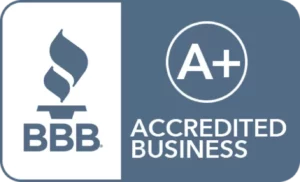Did you know that an IRA rollover is one of the most common ways to fund your Individual Retirement Account (IRA)? Further, the most common type of rollover is a transfer of funds from a workplace 401(k) when you leave a job. In the following, we’ll discuss what a rollover is, why you may want to do one and how to do it.
What Is an IRA Rollover?
In its simplest terms, an IRA Rollover is when you move assets from one retirement account into an IRA. For example, you have a 401(k) at a job you are leaving. You can choose to leave your assets there, or roll them over into an existing (or new) IRA. It’s fairly easy to do and can be done directly or indirectly.
There are basically two types of rollovers: Indirect and Direct. A Direct rollover, also referred to as a trustee-to-trustee transfer is the easiest and safest way to roll over funds. An Indirect rollover gives you more flexibility, but there are some risks involved.
Indirect Rollover vs. Direct Transfer
Deciding on how you want to move your funds is a personal choice. As stated above, the direct transfer of funds from one retirement account to another is easiest. You simply request your plan administrator to transfer funds from your current plan to the trustee of your IRA. You can rollover funds from any type of plan including a 401(k), 403(b) or another IRA.
An indirect rollover is different in that you receive the funds first, and not the new IRA. Instead of sending funds directly to the IRA, you will receive a check. If your intention is to just move funds to the new account, you can cash the check and fund the new account immediately. However, you do have some leeway to use those funds. In fact, you have 60 days to deposit that money into the new plan (more on that later).
Reasons for an IRA Rollover
The two main reason for rolling funds into an IRA are switching jobs and looking for better investment options or lower fees. If you hop around from job to job, looking for the right fit, you may accrue many retirement plans. No matter how long you are employed by a business, it’s always best to take advantage of their retirement plan, if offered. However, once you find the perfect job, what are you going to do with all those previous plans? The best thing is to roll them over into one account. You’ll thank yourself at tax time and when you hit retirement.
The other time you may wish to rollover funds is when you’re looking for another provider. Your current one may have suited you fine at first, but now you want to explore other investment options. Many IRA Financial clients take advantage of the IRA rollover to start investing with a Self-Directed IRA. Since you are limited in investment options with a more traditional custodian, a rollover is the perfect way to start investing in alternative assets. A Self-Directed IRA allows you to invest in just about anything you want.
Rollover Rules
There are a few rules that can make an IRA rollover a little tricky. These apply to the indirect rollover mostly:
Withholding Penalty
If you receive funds personally from your administrator, the IRS will impose a withholding penalty. The amount is 10% of an IRA withdrawal or 20% from other accounts, such as a 401(k). There are no taxes withheld for a direct transfer. Also, there are no taxes withheld for a Roth IRA. The penalty is the IRS’ way of telling us to not take possession of funds for a rollover. Lastly, the entire amount (including funds that were withheld) must be deposited into your IRA.
60 Day Rollover Rule
Earlier, we mentioned you have 60 days to do whatever you want with the distribution of an old account. When that grace period is up, any amount not deposited into the new IRA will be treated as a distribution. It will be added to your income for the year, taxed and, if you are under age 59 1/2, you’ll get hit with a 10% early withdrawal penalty. Unless you absolutely need that money, it’s always better to opt for a direct transfer.
IRA One-Rollover-Per-Year Rule
According to the IRS, “…you can make only one rollover from an IRA to another (or the same) IRA in any 12-month period, regardless of the number of IRAs you own.” Prior to 2015, you could do as many rollovers as the number of IRAs you owned. Now, you can only do one IRA rollover in any 12-month period. For example, if you performed a rollover on June 1, 2019, you cannot do another one until June 2, 2020.
This only effects rollovers and not direct transfers of one IRA to another. Moreover, this does not apply to a traditional IRA to Roth IRA rollover, also known as a conversion.
Conclusion
An IRA Rollover is an important tool to utilize. It can help consolidate all your old workplace retirement plans into one IRA. Further, it allows you to shop around for a plan that best suits your needs. However, it’s important to be mindful of all the rules surrounding an IRA Rollover.











